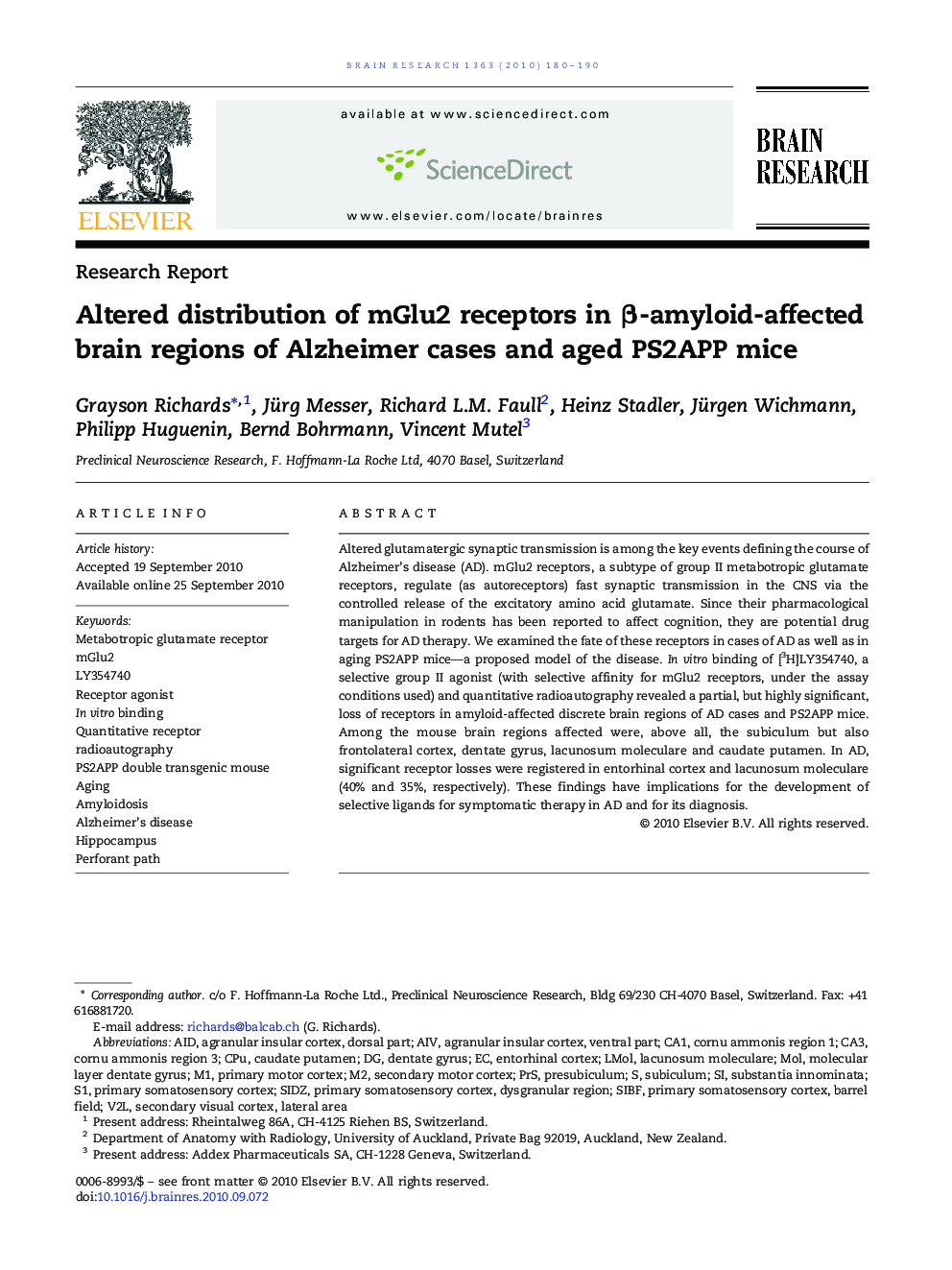| Article ID | Journal | Published Year | Pages | File Type |
|---|---|---|---|---|
| 4326334 | Brain Research | 2010 | 11 Pages |
Altered glutamatergic synaptic transmission is among the key events defining the course of Alzheimer's disease (AD). mGlu2 receptors, a subtype of group II metabotropic glutamate receptors, regulate (as autoreceptors) fast synaptic transmission in the CNS via the controlled release of the excitatory amino acid glutamate. Since their pharmacological manipulation in rodents has been reported to affect cognition, they are potential drug targets for AD therapy. We examined the fate of these receptors in cases of AD as well as in aging PS2APP mice—a proposed model of the disease. In vitro binding of [3H]LY354740, a selective group II agonist (with selective affinity for mGlu2 receptors, under the assay conditions used) and quantitative radioautography revealed a partial, but highly significant, loss of receptors in amyloid-affected discrete brain regions of AD cases and PS2APP mice. Among the mouse brain regions affected were, above all, the subiculum but also frontolateral cortex, dentate gyrus, lacunosum moleculare and caudate putamen. In AD, significant receptor losses were registered in entorhinal cortex and lacunosum moleculare (40% and 35%, respectively). These findings have implications for the development of selective ligands for symptomatic therapy in AD and for its diagnosis.
Research Highlights► Brain mGlu2 autoreceptors are significantly reduced with age in PS2APP mice. ► The loss of these receptors is greatest in the subiculum of the hippocampal formation. ► A significant loss of corticohippocampal receptors is also found in seven cases of AD. ► Neurotoxic effects of amyloid plaques on glutamatergic neurons are thought to be causal. ► The brain regions affected are implicated in cognitive decline in AD.
